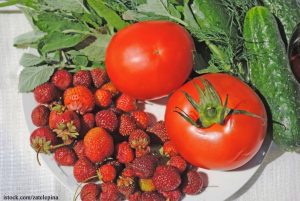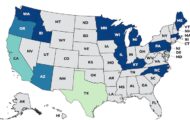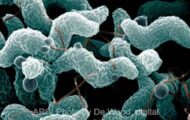The nationwide Salmonella outbreak linked to imported Andrew & Williamson cucumbers is not the first illness outbreak linked to produce imported by that company. In 1997, a hepatitis A outbreak that sickened 260 faculty members and students in four different school districts in Calhoun county, Michigan was linked to strawberries sold by A&W. One student needed a liver transplant after this outbreak.
 A report that was part of a TED talk at American University states that strawberries served in school lunches “were traced to a processing plant in San Diego, known as Andrew and Williamson.” The company shipped strawberries from the same lot to schools in five other states, including Arizona, southern California, Georgia, Iowa, and Tennessee.
A report that was part of a TED talk at American University states that strawberries served in school lunches “were traced to a processing plant in San Diego, known as Andrew and Williamson.” The company shipped strawberries from the same lot to schools in five other states, including Arizona, southern California, Georgia, Iowa, and Tennessee.
As a result, the CDC and local officials set up clinics in the schools, giving the children immune globulin shots to protect them against the disease. Hundreds of children had to be immunized as a result of this outbreak, even though the vaccinations were limited to children who ate the fruit.
The biggest issue in this outbreak was that the strawberries had been imported from Baja California in Mexico. The USDA has a requirement that all foods distributed under the school lunch program must be grown and produced in the United States.
It’s interesting that the CDC reports do not mention Andrew & Williamson by name. They only state that “a company in southern California processed, packed, and froze the strawberries in 30 pound containers for commercial use and then distributed the strawberries to U.S. Department of Agriculture-sponsored school lunch programs.”
Officials still do not know exactly how the strawberries were infected with the virus. Mexico said that the processing plant in California was the source of the contamination, while the CDC tried to match samples of the virus from patients to people in the Baja, Mexico region. The strawberries could also have been contaminated in transit, or at the school cafeteria. No definite reason has been proven, even 18 years later.
Back then, the USDA started requiring the packing date, lot number, and country of origin put on all frozen foods. Other countries considered country of origin labeling a non-tariff trade barrier, and foreign produce farmers opposed the labeling. President Clinton urged legislation at the time to developing voluntary guidelines for growing, processing, shipping, and selling fruits and vegetables. Those guidelines were finally implemented in President Obama’s 2011 Food Safety Modernization Act.
The current ongoing Salmonella Poona outbreak linked to Andrew & Williamson cucumbers imported from Baja California, Mexico has now sickened at least 558 people in 33 states. Information about distribution of the cucumbers has been difficult to obtain. No distribution list of stores and restaurants that sold the contaminated produce has been released.
We do know that the stores that posted recall notices on their web sites include Walmart, WinCo, Savemart, Ralphs, and Food 4 Less. Restaurants that may have sold the couch era include In-N-Out Burger, Capital Grille, and Olive Garden. We do know that Red Lobster restaurants sold the cucumbers in salads, since a Salmonella Poona outbreak in Minnesota was linked to those restaurants.
The symptoms of a Salmonella infection include nausea, vomiting, fever, chills, muscle aches, headache, and diarrhea that may be bloody. If you have eaten cucumbers in the past month or so and have experienced these symptoms, please see your doctor. Ask for a stool test for Salmonella.




